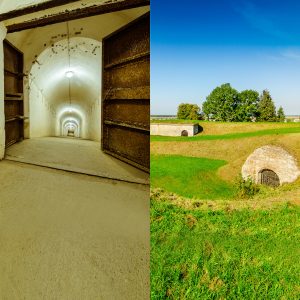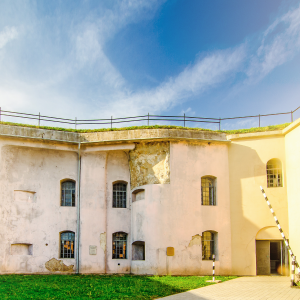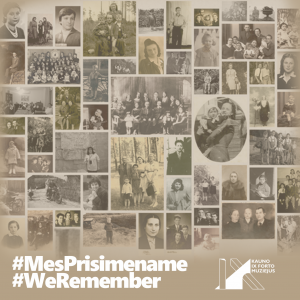Loading...
-

Timetable of the guided tours at weekends
Only general organised guided tours take place in Kaunas Ninth Fort Museum at weekends. Pre-booking is not possible: the person who purchased the ticket earlier acquires the priority to participate in the guided tour. The maximum number of participants in a tour is 25 people. A special ticket for a participant of an organised guided… Read more -

IMPORTANT INFORMATION FOR THE VISITORS
Kaunas Ninth Fort Museum will be closed on May 5th (Sunday), 2024. On May 4th, the museum will work until 17:00. -

2023 June 22 d. 13:00
Opening of Christian Boltanski’s installation “Animitas”
Commemorating the Day of Remembrance of the Genocide of Lithuanian Jews
On September 22, 2023, Kaunas Ninth Fort Museum will commemorate the Day of Remembrance of the Genocide of Lithuanian Jews, and the installation “Animitas” (Lithuanian: Souls) by the famous artist Christian Boltanski will be opened. Kaunas Ninth Fort Museum and “Kaunas 2022” are inviting you to pay tribute to the victims of the Holocaust and… Read more -

International Holocaust Remembrance Day
For the commemoration of the International Holocaust Remembrance Day, we invite you to listen to the thoughts of the pastor, the initiator of the “March of Life”, the author of the book “Breaking the Veil of Silence”, Jobst Bittner, and the representatives of the younger generation, on why it is important to talk about what… Read more -

International youth group performed at Kaunas Ninth Fort Museum
Project "Sound in the Silence"
How can art help young people relive and understand some of the most difficult pages from the history of the last century? Students from Croatia, Hungary, Germany and Lithuania visited the Ninth Fort of the Kaunas Fortress Museum to take part in the eighth edition of the educational project Sound in the Silence. The 19th-century… Read more
Loading...
Concrete-filled Brutalism and Historical Memory that Testifies Brutality
Virtual exhibition
Geometric shapes and rough surfaces, which highlight the natural materials of the construction, are the main features that characterise the direction of architecture called brutalism. The name of brutalism that prospered in the architecture of the 1960s and 1980s is associated with the technology of finishing the external surface of buildings with raw concrete [french béton brut].
(more…)

